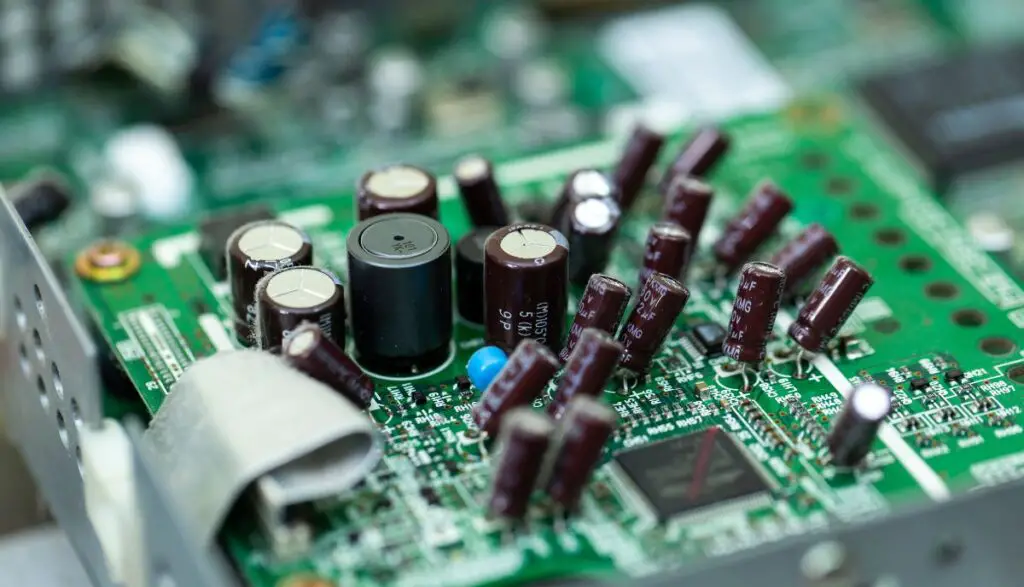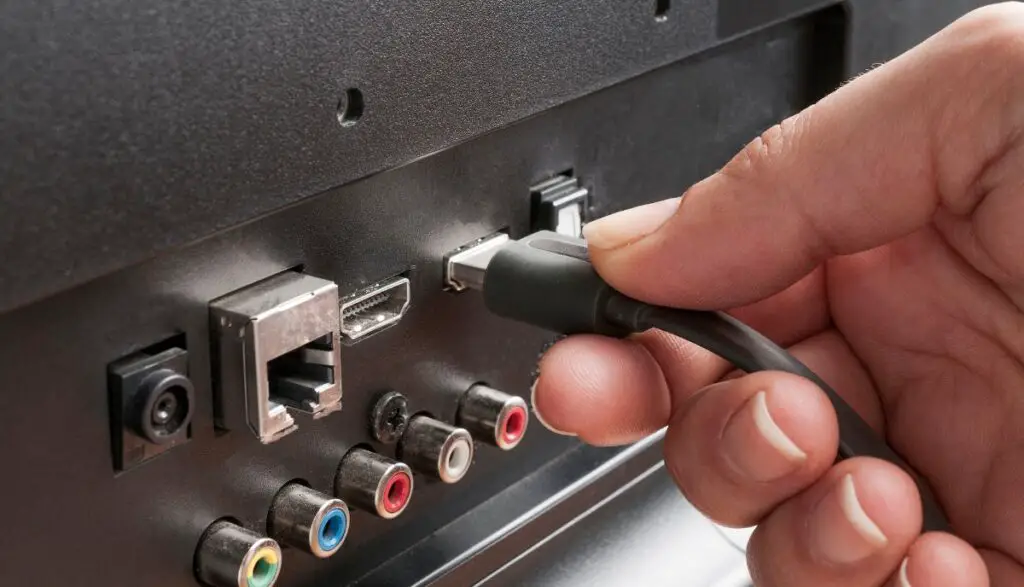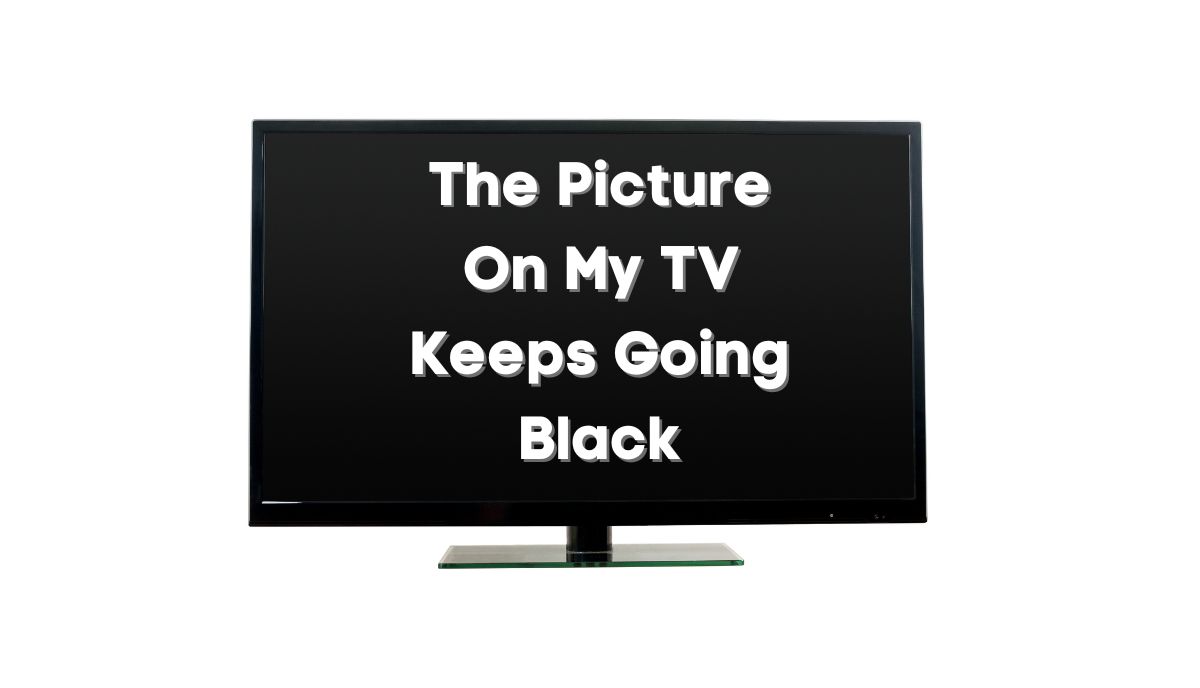You can make the screen black by adjusting the settings. Some people do this by accident while configuring a new TV. But if you haven’t touched the settings, why would a picture on the TV go black? The following may explain this phenomenon:
1). The Power Board Has Gone Bad
How does your home’s circuit run a TV? Surely, you can’t expect the circuit’s 110V to operate the device without frying it? The power board turns 110V AC into a lower voltage that a TV’s internal electronics can handle.

Unfortunately, a defective power board will disrupt the electrical supply to components like the microprocessor, which, in turn, interferes with the TV’s critical functions. A black picture is merely one of several symptoms you will eventually observe.
Others include flickering images, distorted colors, and no sound. Eventually, the TV may refuse to start. The longer you take to fix the problem, the more severe the consequences. The TV may sustain irreversible damage in the long term.
Repairing The Power Board
- Start by inspecting the external parts of the power supply system. Check the wall outlet for wear and rear, and replace it where necessary.
- Make sure the TV plug is firm in the wall outlet.
- Replace a defective plug.
- Tighten loose connections in the plug and wall socket.
- Replace a power cord with a torn jacket.
Once you eliminate some of the obvious culprits, you can turn your attention to the power board. But keep in mind that accessing the power board may void your warranty:
- Disconnect the TV from its power source and remove the back panel to access the board.
- Perform a visual inspection. Look for bulging components, burn marks, and the like.
- You can also test the voltage with a VOM meter.
- Look for bad capacitors. They look like cans. Popping sounds from inside the TV point to a bad capacitor. The large capacitors are usually fine. If you see leaks and swelling in the smaller ones, replace the failed capacitors. This assumes you’re competent with a soldering iron.
- Keep an eye on the fuse. If it blows, replace it.
2). The Backlight Is Faulty
This paper from researchers at the Department of Optics and Photonics (National Central University, Taiwan) has highlighted the vital role blacklights play in TVs. This technology illuminates the image on the screen. When the backlight fails, you will observe one or more of the following symptoms:
- The screen will become dim even though you’ve increased the brightness.
- The screen will go black. The audio will continue to emanate from the speakers, but you won’t see images on the screen.
- If the backlight is starting to die, the screen will flicker.
- Parts of the screen will go dark while others continue to function. Look for dark and bright spots.
But why would a component as essential as the backlight fail? The following variables will contribute to this problem:
- A spike in the electrical current can wreak havoc on sensitive components like the backlight.
- Some backlights have factory defects.
- Others wear out naturally. USA Today expects the LEDs to last a decade (roughly 100,000 hours) if you lower the brightness settings. In other words, you can’t stop the backlight from failing.
- A power supply, main, or LED driver board can affect the backlight’s functionality.
- Backlights can fail because of bad power inverters and capacitors.
- Backlights can sustain physical damage when the TV falls.
- Backlights are vulnerable to excess moisture.
Replacing The Backlight
- Test the connection point between the backlight cable and the board. Run the red lead of a multimeter to a positive point (in the connection) and the black lead to a negative point. You’re looking for 100 volts or less (when you turn the TV on).
- If you record voltage readings higher than 100V or closer to zero, test the individual connector pins with a multimeter after disconnecting the backlight cable from the board (red to the positive points and black to the TV’s metal chassis).
- A voltage above 100V shows that your board is okay. It is supplying power as expected. You need a new set of backlights. A reading of zero volts will encourage you to replace the power board. A power supply board repair cost you upto $200 – $400.
Newsons Electronics has published a video showing consumers how to access the backlights. The task is far from easy because it means removing the bezel frames, boards, chassis, ribbon cables, and the screen. Don’t perform this task unless you know what you’re doing:
- Take the reflective layer on the backlight strips off after pushing the plastic pegs away.
- Disconnect the cable running to the strips.
- Find the circular metallic points. Place the red lead of the backlight tester on the positive point and the black lead on the negative point. If one or more bulbs fail to light up, replace the whole strip.
- Use a scraper or card to remove the damaged strips.
- Stick the new strips in the place the old strips previously occupied.
- Test the new strip with a backlight tester. All the bulbs should illuminate.
- Connect the backlight cable to the new strip.
- Reassemble the TV.
3). The Software Is Gitchy
Modern TVs are computers. They have sophisticated software. Unfortunately, this makes them vulnerable to software errors and glitches. This is why regular updates are so important. People who forget or refuse to update their TV’s firmware observe:
- Flickering screens
- Dark or dim screens
- TVs that refuse to turn on
- Apps that refuse to open
- Apps that close unexpectedly
- TVs that shut down without warning
- Channels that disappear
Fixing Software Glitches
- Reset the TV by depriving it of power for a few seconds or minutes.
- Reset the router. Some routers have a reset button.
- Check the internet speeds. Some streaming platforms won’t work unless you have sufficient internet speeds and a reliable connection.
- Perform a factory reset on the TV or router.
- Update the individual apps, especially if you only notice the black screen while watching content on a particular streaming platform. You can also uninstall and re-install the affected apps.
- Update the TV’s firmware. It is safer to program the TV to update automatically. Some people prefer to approve each update. But you are more likely to forget to update the TV.
- Because the TV cannot update its firmware without a proper internet connection, you should troubleshoot the TV’s internet connectivity. Is the ethernet cable frayed? Does it have a secure connection to the TV? Do you need a new port? Are their sources of interference in the vicinity?
- Talk to your internet service provider if your network is poor and the speeds are too low.
- Do you have sufficient storage? If the TV keeps running low on storage, delete unnecessary apps and clear the cache.
4). The TV Has Damaged Ports Or Loose Connections

TVs use cables to transmit audio and video signals. You can’t expect a damaged cable to produce a clear picture with vibrant colors. An HDMI cable can easily last ten or more years. But you can lower its lifespan through careless handling and poor storage.
Damaged cables are usually easy to spot because they have frayed jackets and exposed conductors. In the absence of physical symptoms of damage, use your HDMI cable on a separate monitor.
If the second monitor works, the TV is at fault. If the pictures on the second monitor are also dark, the HDMI cord is at fault. If you rule out the HDMI line, the port is at fault.
Fixing A Damaged Cable
You don’t fix damaged HDMI and coaxial cables. You simply replace them. You can buy a new cord for a few dollars. The exact cost will depend on the cable’s brand. Many customers prefer to buy their lines from the same company that makes their TVs.
However, many experts argue that all HDMI cables are the same. It will work as long as you buy yours from a reputable brand. Naturally, some attributes will vary. For instance, Life Wire has noted that HDMI 2.0 differs from HDMI 2.0 with ethernet and HDMI 2.1.
Ports are far more complicated. While any layperson can replace an HDMI cable, you need an expert to diagnose, test, and replace a bad port. Some ports are genuinely damaged. Others are merely loose.
You also have those with bent or broken pins. Can you fix them? Do you need a new port? Did the defect on the port translate into a fault on the board? A layperson cannot answer these questions.
A technician will take the TV apart to determine whether the port’s problems originate from the motherboard or the power supply unit. They may even encourage you to buy a new TV if the fault lies with the screen. After all, the screen is the most expensive component.

